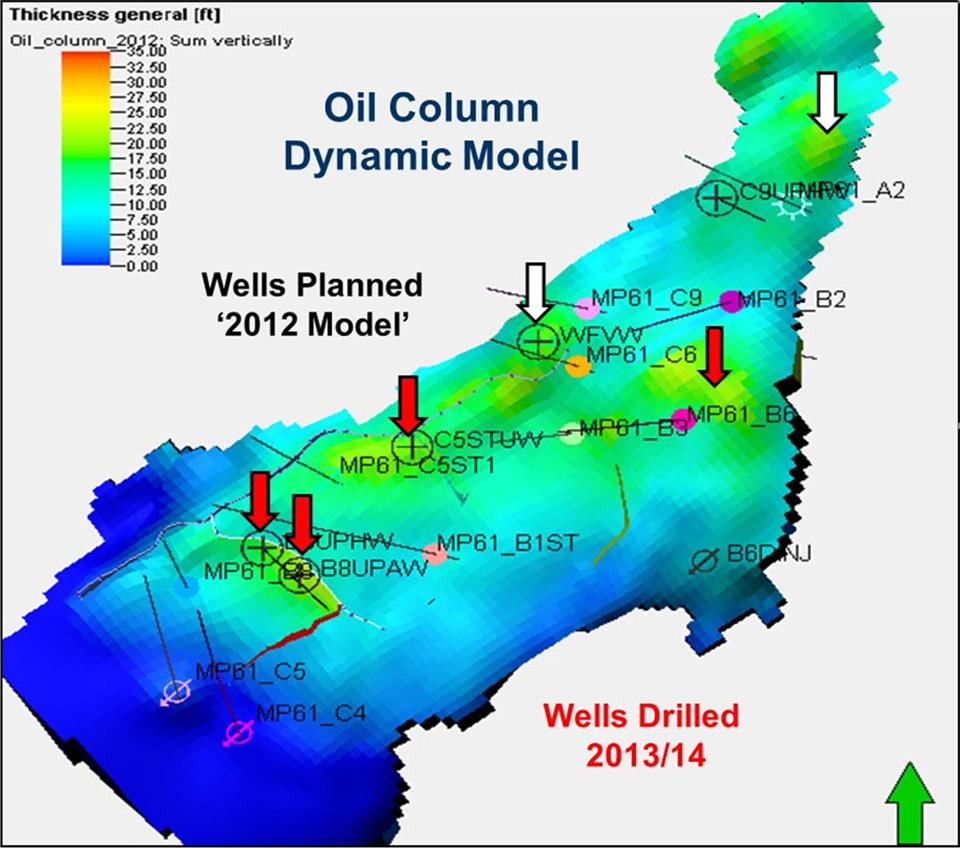Reservoir modeling has changed dramatically with the ability to incorporate new technologies and imaging techniques. Welcome to an interview with Randal Utech, Geology and Geophysics Advisor for Schlumberger, who discusses new developments in building effective reservoir models that can be used for decision-making and generating new ideas.
What is your name and your involvement in oil and gas exploration and production?
My name is Randy Utech and I am currently Geology and Geophysics Advisor for Schlumberger. I have been active in exploration and production studies integrating geology, geophysics and reservoir engineering. I began my career in geophysics at Western Geophysical in 1982 with a degree in Geology and Geophysics from the University of Wisconsin. While my main focus has been in exploration and development, my career progressed from seismic acquisition to processing and interpretation to exploration and prospect development, to drilling and field development studies including reservoir modeling and simulation.
What are some of the techniques and technologies that you consider to be "tried and true" in developing an idea of the reservoir and its producible extent?
Because a reservoir model is at best an approximation of reality, it is important to integrate all available information into the model (logs, petrophysics, core, seismic, geochemistry, anisotropy, borehole images, fractures, pressure, stress and formation properties etc.). This is the key input to the reservoir model and is used to construct a framework of physical properties of the reservoir in order to simulate fluid flow and production.
As for ‘techniques and technologies’ I have been strong advocate for more effective integration of seismic information such as elastic properties from seismic inversion. Conventional reservoir modeling and simulation studies frequently underutilize seismic information. Wells sample the earth with high vertical resolution at a single location, but seismic provides highly sampled information in the intra-well space. The utilization of depth calibrated, properly conditioned intra-well seismic information can lead to better definition of the reservoir and simulation results.

Corresponding Dynamic Model
Effective porosity model (left) illustrates the reservoir and and associated field well penetrations. The corresponding dynamic model (right) highlights the predicted oil colum height (in feet). Arrows indicate the locations of recommended wells to drain the remaining unswept oil based upon the simulation results. The model integrated seismic elastic properties from prestack inversion including baffels and barriers form the seismic discontinuity analysis. Red arrows indicate wells subsequently drilled in 2013/14 substantiating the model and incremental recoverable reserves of more than 4MMBO.
While seismic interpretation provides the structural framework for the reservoir model, seismic elastic measurements may be used co-populate the reservoir model in the intra well space with estimates of lithology based upon a rock physics classification. Also, the enhanced resolution of inverted seismic improves the delineation of the reservoir boundaries, stratigraphic pinch-outs and the spatial distribution of reservoir facies. In addition, seismic discontinuity analysis may provide a framework for classifying subtle faults, baffles and barriers, reservoir compartments, and conduits to fluid flow.
While this approach is “tried and true” there are always challenges and limitations, particularly in areas where seismic imaging is compromised (e.g. subsalt and very deep targets and areas with complex overburden). ‘Mother Nature only gives you so much’ to work with but there is always something to gain if we understand the physical limitations and utilize the information that is there.
What are some of the new or emerging technologies that may be of interest?
Some recent advances in technology include “Depth Domain Seismic Inversion’ that is effective in complex geological settings. This seismic inversion method addresses illumination effects with depth inverse modeling and compensates for seismic phase amplitude and distortions caused by complex geological overburden.
I believe this method will enable geoscientists the ability to create more meaningful models particularly in sub-salt reservoirs or in areas where complex imaging has compromised measurements of elastic properties.
How has the ability to model a reservoir changed in the last few years?
Reservoir modeling technology has advanced tremendously during the ‘shale revolution’ Most advances in recent years has been focused on unconventional reservoirs with new developments in software and the measurement rock properties.
A few examples would include:
- Integration of geomechanics to evaluate completion quality and fracture containment
- Optimizing recovery by modeling the magnitude and azimuth of in situ stresses over time
- Natural fracture characterization with orthotropic AVAZ inversion with wide-azimuth seismic
- Fracture propagation simulation evaluating interactions with the existing fractures
- Advances in logging measurements and petrophysical analysis coupled with simulation
What do you think might be some of the new directions in reservoir modeling?
I think there is a general progression toward increasing model granularity while integrating measurements that bridge multiple scales of focus. Geology and geologic processes govern the model but there is a wide array of measurements that engineers need to simulate complex reservoir behavior. It’s all about the rocks.
There will be increasing focus in the calibration of models to seismic measurements. In many cases model updates may need to utilize 4-D time lapse measurements and integration of real time downhole measurements.
Increasingly the focus will be to understand the dynamic production system and to develop an accurate earth model that is able to respond dynamically to changing physical conditions that result from production over time (e.g. depletion, compaction, fracture compliance) in order to optimize recovery cost effectively.
Cloud processing systems are gaining more momentum and will enable more specialists at remote locations to interact and contribute to modeling and simulation process.
I anticipate more focus will be given to coupling of the reservoir simulation model with surface hardware (lift pumps and facilities) to optimize equipment deployment and production.